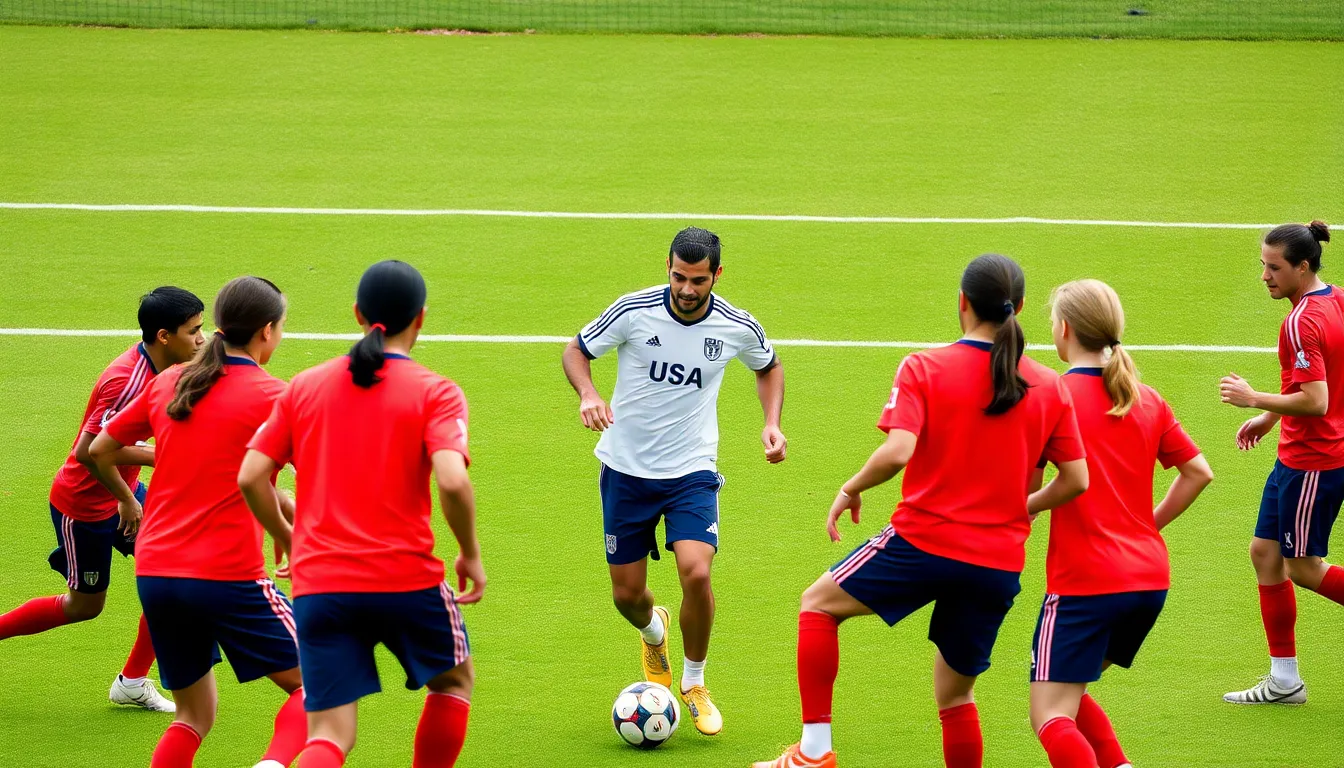In the world of football, midfielders are the unsung heroes, orchestrating plays like conductors leading a symphony. They’re the glue that holds the team together, often running more than a caffeinated squirrel on match day. Whether they’re delivering pinpoint passes or executing dazzling dribbles, these players turn the beautiful game into an art form.
Table of Contents
ToggleOverview of FIFA Best Midfielders
Midfielders serve as the backbone of a football team’s structure. Their ability to link defense and attack defines their importance on the field. Players like Kevin De Bruyne and Luka Modric exemplify exceptional skills, showcasing vision and precision in their passing. Characteristics of top midfielders include stamina, tactical intelligence, and technical ability.
Team dynamics often depend on midfielders orchestrating plays, creating spaces, and controlling the game’s rhythm. They balance offensive responsibilities with defensive duties, making them versatile athletes. For instance, N’Golo Kanté’s relentless work rate combines recovery and distribution, earning him recognition as one of the best.
Statistics highlight key performers: successful passes, assists, and recoveries measure their influence. Analyzing these metrics reveals the impact these players have, contributing to overall team success.
Continual evolution in their roles emphasizes adaptation. Modern midfielders, like Frenkie de Jong, demonstrate agility and creativity, adapting to various styles of play. Observing their development showcases a shift towards attacking responsibilities, enhancing their contribution to scoring opportunities.
Recognition through awards, including FIFA Best Men’s Midfielder, honors excellence within the position. Talented athletes consistently emerge from various leagues, illustrating the strength and depth of skills in this crucial role. The ongoing search for top-tier talent ensures a competitive landscape, drawing attention to the midfield position’s significance in the sport.
Criteria for Selection

Selecting the best midfielders involves evaluating specific skills, techniques, and contributions to team performance. Each player’s ability to influence the game plays a significant role in their recognition.
Skills and Technique
Top midfielders exhibit exceptional skills and techniques. Precision passing consistently defines their gameplay, while vision allows them to anticipate plays. Effective dribbling separates standouts from others, granting them the ability to maneuver through opponents. Stamina is crucial, enabling them to maintain high levels of performance throughout matches. Tactical awareness complements their skills, allowing them to read the game and position themselves effectively. Collectively, these attributes form a complete midfielder capable of altering a game’s outcome.
Impact on Team Performance
Midfielders carry substantial influence on overall team performance. They bridge the defense and attack, ensuring fluid transitions during gameplay. Statistical measures, like assists and successful passes, showcase their contributions. Possessing the ability to control the game’s tempo is vital; it allows teams to dictate play and create scoring opportunities. Defensive responsibilities also fall to midfielders, as they recover possession and disrupt the opponent’s rhythm. Their versatility enhances team dynamics, ultimately leading to improved outcomes in matches.
Notable FIFA Best Midfielders
Midfielders stand out as key players in football, often defining matches and seasons. Their influence stretches from legendary figures to current stars.
Legendary Players
Zinedine Zidane remains one of the most celebrated midfielders in football history. Known for his exceptional ball control and vision, he led France to victory in the 1998 World Cup. Another iconic player, Andrea Pirlo, dazzled fans with his passing ability and game intelligence, winning multiple titles with AC Milan and Juventus. Xavi Hernandez, pivotal in FC Barcelona’s dominance, exemplified tactical awareness and precise distribution. Each of these players redefined the expectations for midfielders, leaving a lasting legacy.
Current Standouts
Kevin De Bruyne continues to impress with his playmaking skills at Manchester City. His ability to create scoring opportunities sets him apart from other midfielders. N’Golo Kanté showcases unmatched stamina and defensive prowess, inspiring Chelsea’s success since joining the squad. Frenkie de Jong combines agility and creativity, making significant contributions to FC Barcelona’s tactics. These current stars embody the evolution of the midfielder role, balancing offensive and defensive responsibilities effectively.
Trends in Midfield Play
Midfield play continues to evolve, reflecting changes in tactical philosophies and player attributes.
Evolution of the Role
Midfielders transformed from traditional passers to dynamic playmakers, adapting to modern football demands. Players now exhibit enhanced stamina and versatility, switching seamlessly between attacking and defensive roles. Creative midfielders like Kevin De Bruyne and Frenkie de Jong showcase agility, emphasizing the importance of quick transitions. These attributes contribute to maintaining possession while creating scoring opportunities. Greater emphasis on analytics highlights how midfielders influence match outcomes through metrics like key passes and interceptions. Teams increasingly seek midfielders who possess both technical skill and tactical awareness, indicating a shift toward well-rounded players that can dictate the pace and flow of the game.
Tactical Approaches
Tactical approaches in midfield play emphasize positional play and spatial awareness. Coaches prioritize formations that enable midfielders to maximize influence, utilizing systems like 4-3-3 or 4-2-3-1 that enhance their roles. Players are often tasked with breaking defensive lines, combining skills to create space in opposition defenses. Midfielders orchestrate pressing strategies, coordinating efforts to regain possession quickly. Recognizing the importance of ball retention, teams employ short, precise passing to maintain control. These approaches highlight how midfielders adapt to varying styles, such as counter-attacking or possession-based systems, crucial for a team’s overall success.
Midfielders are undeniably the heartbeat of football. Their unique blend of skills and tactical awareness shapes the game’s flow and determines a team’s success. With their ability to connect defense and attack they elevate the play to an art form. The evolution of this position continues to impress with players adapting to modern demands while maintaining the essence of what makes a great midfielder.
As the search for top talent continues the spotlight remains on those who can master the delicate balance of offensive creativity and defensive responsibility. The legacy of legendary midfielders inspires the next generation to push boundaries and redefine the role. In the ever-evolving landscape of football the impact of midfielders will always resonate.



